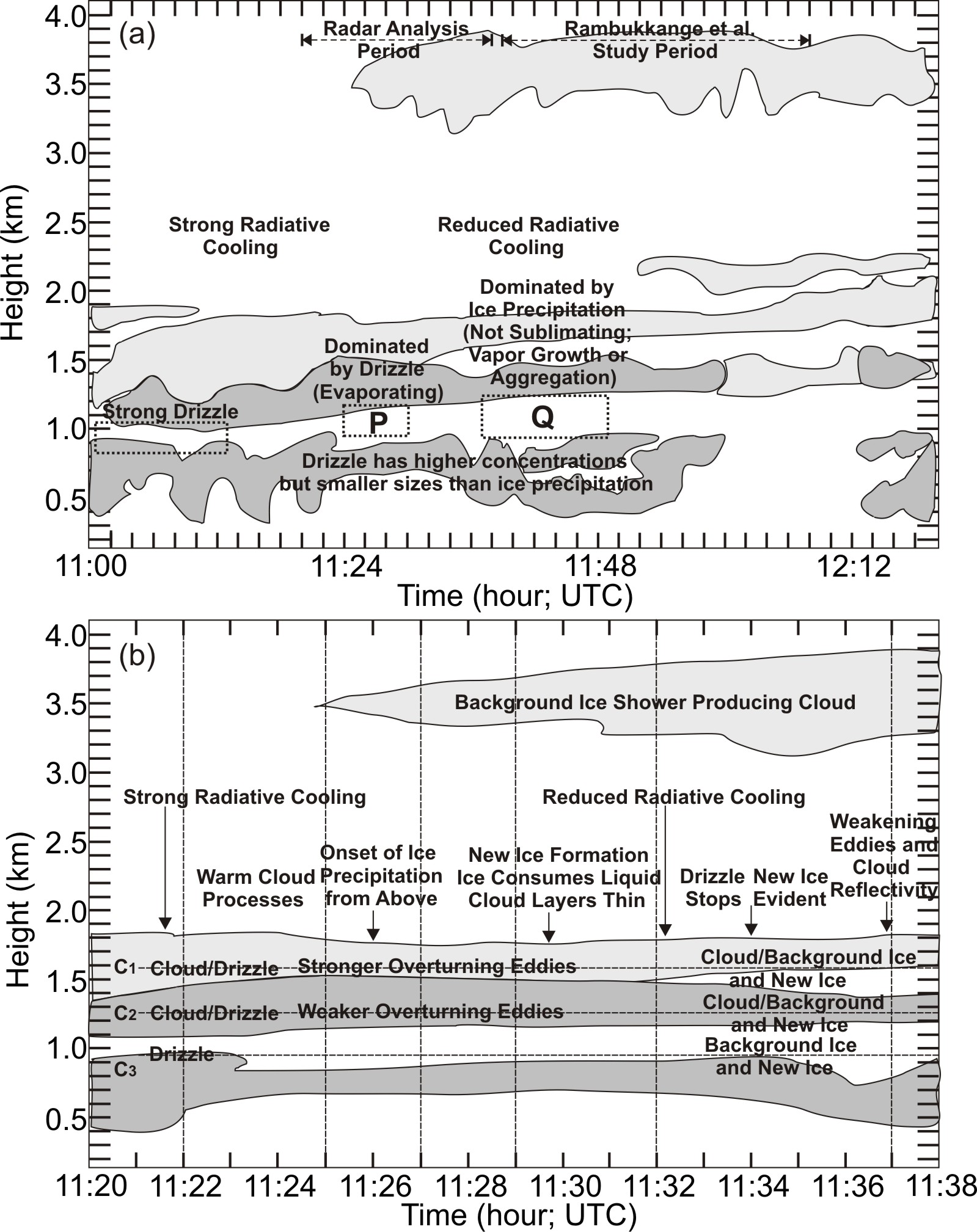Arctic Multilayered Mixed-Phase Cloud Processes
Submitter:
Verlinde, Johannes — The Pennsylvania State University
Area of research:
Cloud Processes
Journal Reference:
Science
Over the North Slope of Alaska, researchers used cloud radar Doppler velocity spectra, lidar backscattering coefficients and depolarization ratios, and aircraft in situ measurements to investigate microphysical processes occurring in a case of multilayered, mixed-phase clouds.
Impact
The observations suggest that strong cloud-top cooling was necessary to produce well-mixed cloud layers. Clouds shielded from radiative cooling by overlaying clouds more frequently existed in absolutely stable layers. The in situ measurements revealed that most liquid layers contained drizzle, which the radar and lidar measurement production process showed was interrupted only during heavier ice-precipitation events. Different layers interacted with one another by changing the radiative heating profile and by precipitation, which changed the growth paths available to cloud particles and even initiated new hydrometeor classes.
Summary
Precipitating arctic cloud systems frequently consist of multiple liquid-cloud layers at different altitudes. Physical processes in these clouds are complex, with different liquid cloud layers interacting through multiple processes.


